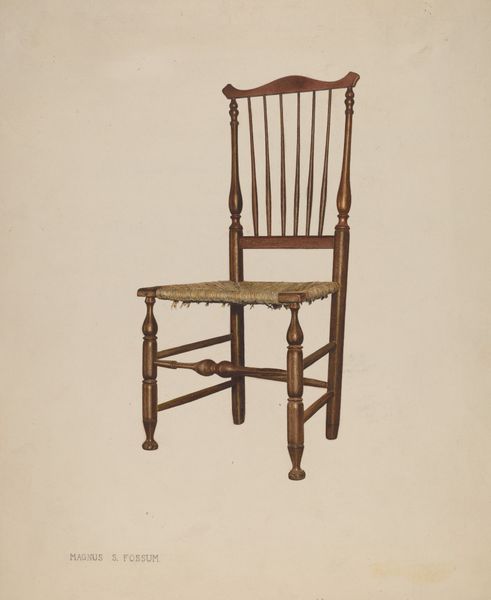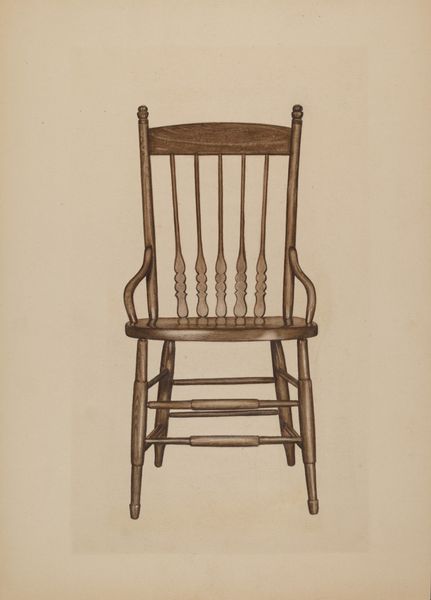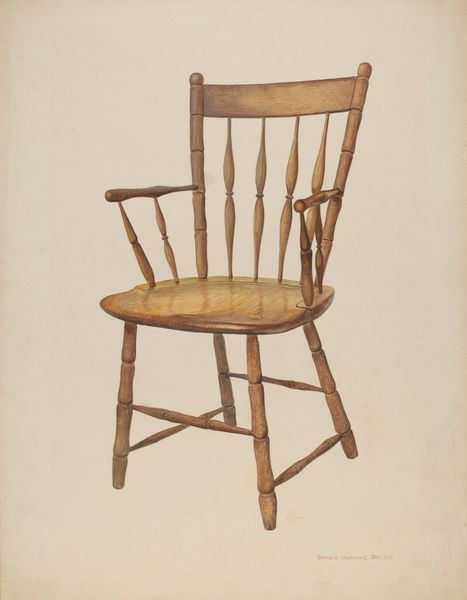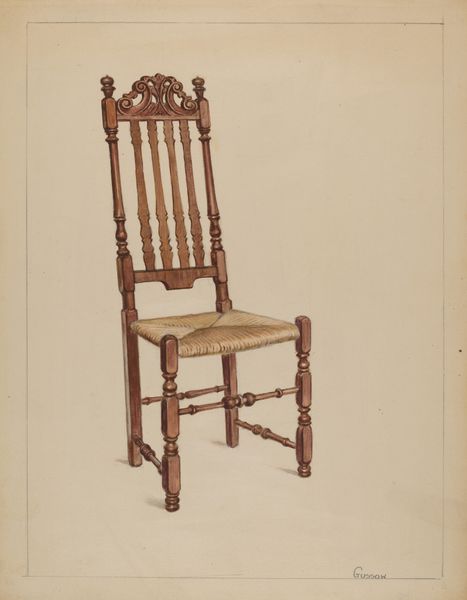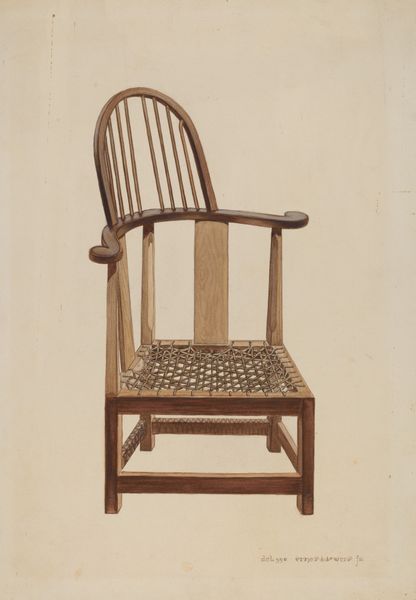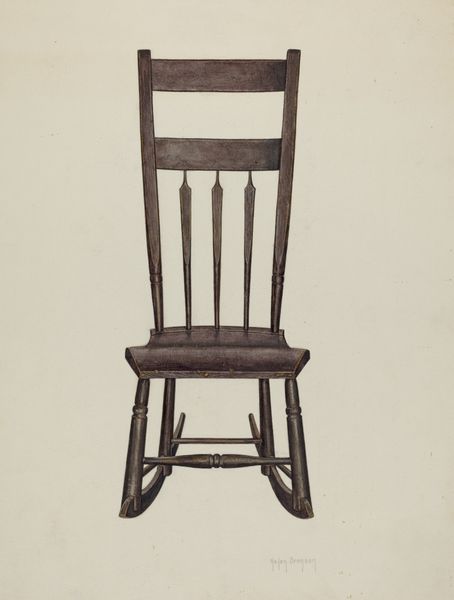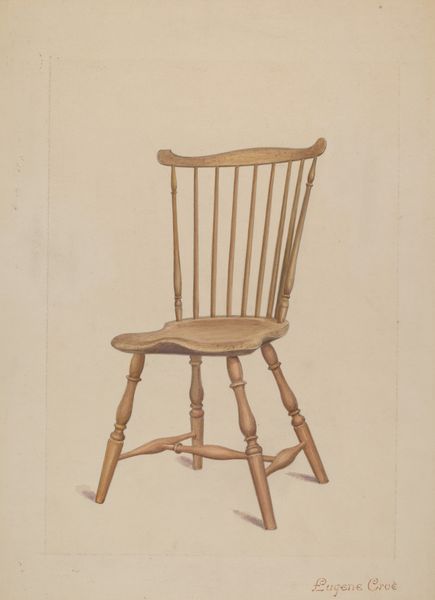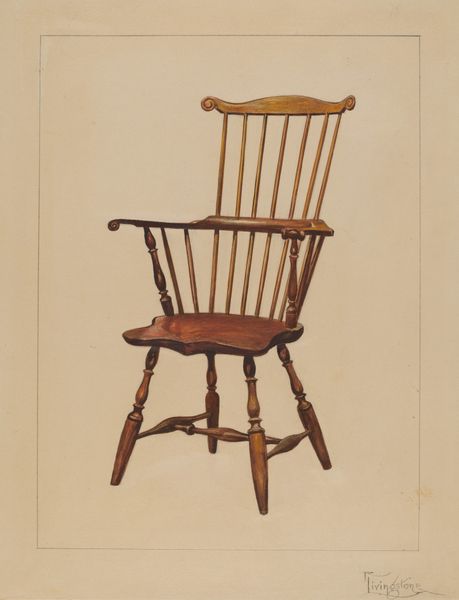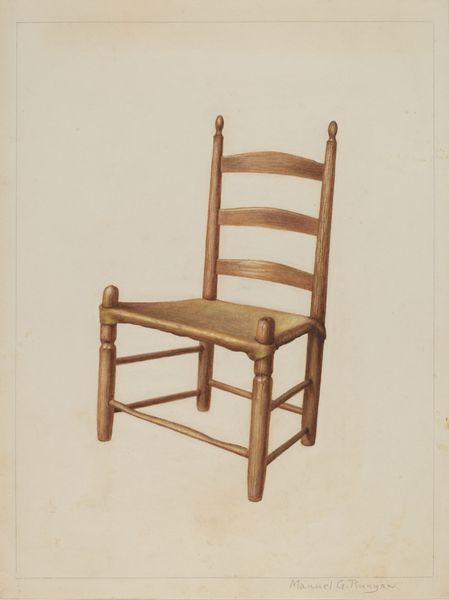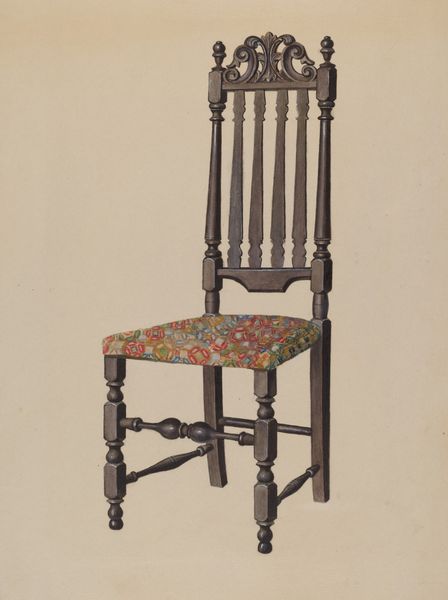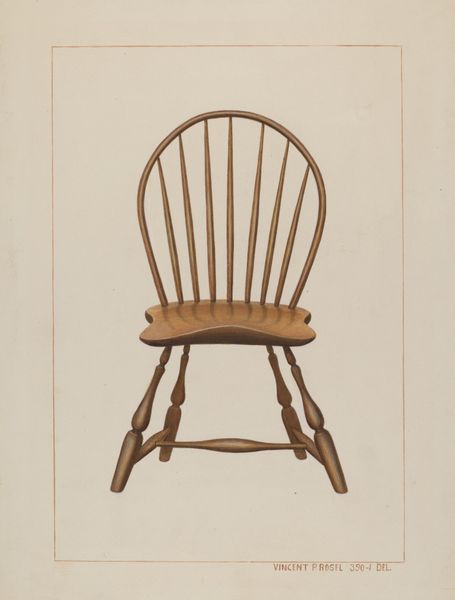
drawing, paper, watercolor
#
drawing
#
water colours
#
paper
#
watercolor
#
decorative-art
Dimensions: overall: 34.6 x 24.2 cm (13 5/8 x 9 1/2 in.) Original IAD Object: none given
Copyright: National Gallery of Art: CC0 1.0
Curator: So simple, yet elegant! We're looking at "Heart and Crown Chair," a watercolor on paper, dating from about 1936, by Howard Weld. Editor: It feels so delicate, like a memory. The chair itself, represented in watercolor, carries such an evocative mood with those soft browns. It almost feels like a gentle domestic yearning, doesn’t it? Curator: Absolutely. Let’s think about this practically: Weld documented this object in detail. The rungs, spindles, woven seat... all carefully rendered. What kind of labor went into producing this chair, originally? Was it a factory production or artisan craftsmanship? These objects embody entire social systems, don’t you think? Editor: Indeed. A chair like this invites considerations of social class and lived experience in a way that is deeply relatable. And what did it *mean* to have such an item during the 1930s? I can't help but consider the narrative this watercolor speaks of everyday resilience. A simple, useful object elevated through art, prompting considerations around gender roles, craft traditions, the symbolism of the 'heart and crown' motif in a postcolonial context and, in a way, democratising aesthetic values. Curator: The heart and crown—it's functional, yes, but there’s also a yearning toward more embellished designs that were then emerging during the early to mid-twentieth century. How were ideas about beauty and domesticity being circulated during that period? Was Weld interrogating how these forms shaped values? It really encourages us to engage in a discussion about design and society! Editor: Certainly! But beyond design, think of the hand that made it and the bodies that sat in it. The history imbued is not just in material creation and usage but a deeper connection between personal lives and the social fabric itself. It's about connecting materiality with the intangible. Curator: It is incredible how this relatively unassuming object has these multilayered relationships with material culture and social context. We start looking at a simple chair and find our perspective shifting radically! Editor: Exactly! A simple chair; but when approached critically through material processes and embedded in society at large, reveals hidden dialogues we rarely discuss.
Comments
No comments
Be the first to comment and join the conversation on the ultimate creative platform.
